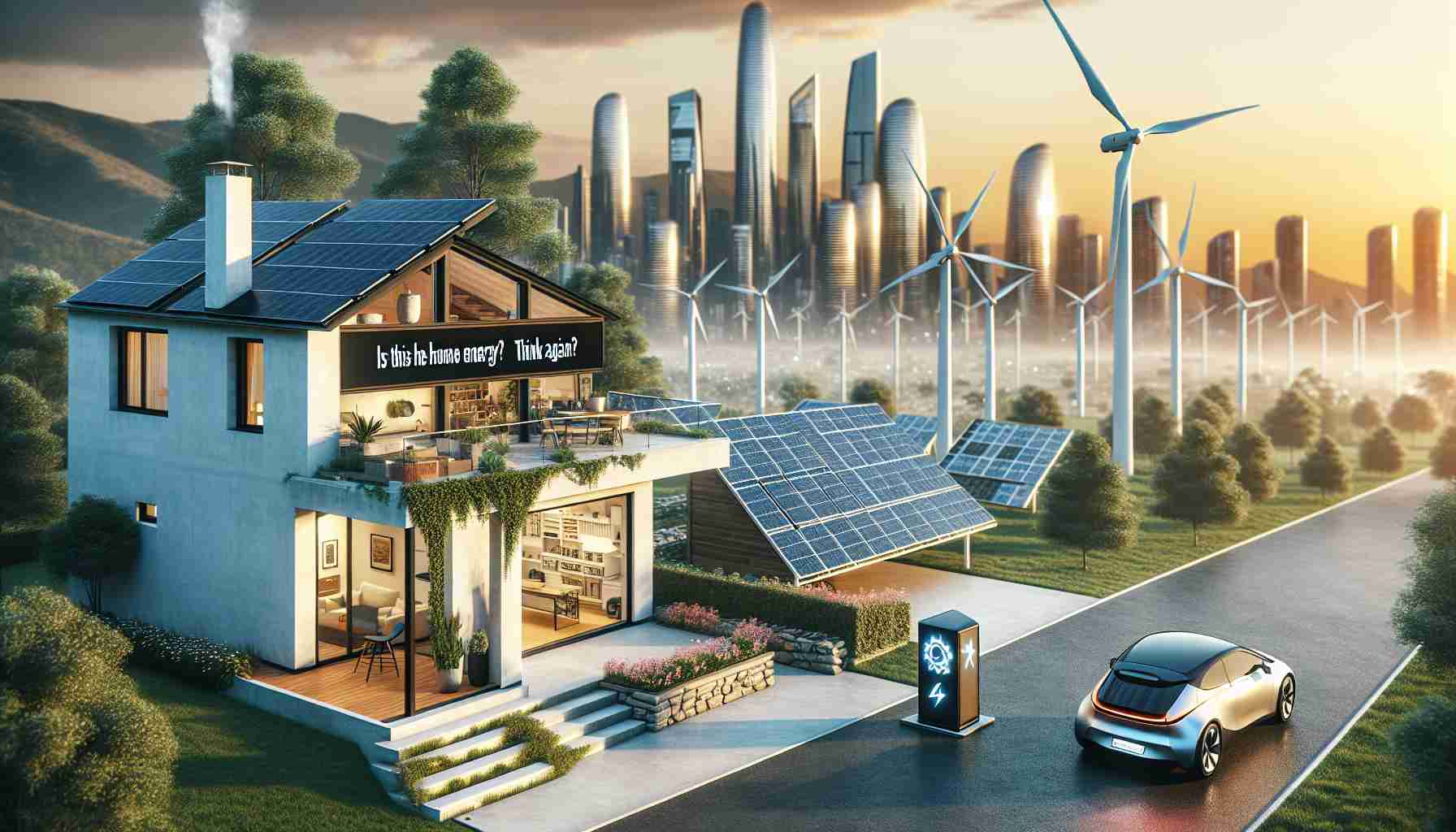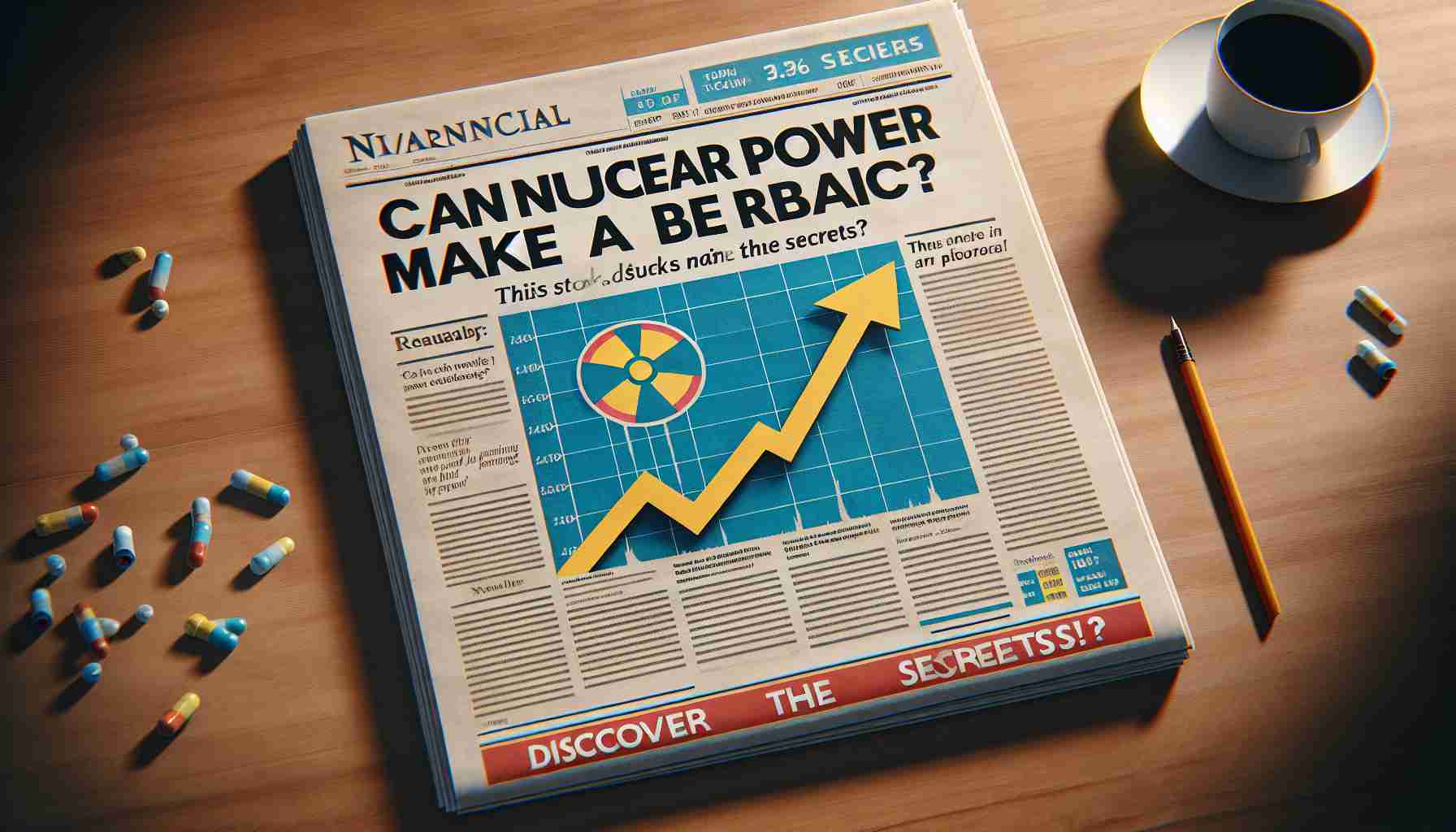The Enron ‘Egg’: A Playful Hoax or a Bold Statement?
Energy enthusiasts may be intrigued by a new product called The Egg, marketed as an at-home nuclear reactor. This imaginative and oddly shaped device, created by the infamous Enron brand, promises to revolutionize energy consumption right from your living room. However, it’s essential to understand that The Egg is entirely fictional and part of a satirical marketing campaign.
The Egg features an amusingly detailed description of its components, including a heat-resistant outer shell and a uranium-zirconium hydride reactor, all presented as if it’s a genuine innovation. A well-produced promotional video gives it the flavor of a legitimate tech launch, further blurring the lines between reality and satire.
Enron, once a leading name in the energy sector, faces a tainted legacy following its dramatic collapse in 2001. While The Egg symbolizes a humorous take on Enron’s return, it cleverly highlights both the absurdity and the potential for real advancements in energy independence.
Although no price is specified, the website teases an affordability that stands in stark contrast to traditional systems costing tens of thousands of dollars. Interested parties can sign up for updates, but purchasing options remain nonexistent.
Interestingly, the new Enron is connected to real energy professionals, suggesting this artful venture might hint at an underlying seriousness. As the energy landscape evolves, we can only wait to see where this comedic concept leads next.
Subverting Expectations: The Broader Implications of Enron’s ‘Egg’
The playful deception of Enron’s latest venture, The Egg, carries profound implications for society and the economy. As we navigate an era increasingly defined by energy crises and climate change, perceptions of unconventional energy solutions, even fictitious ones, resonate deeply with public sentiment. This satirical product underscores a crucial truth: the quest for sustainable energy sources is both urgent and fraught with skepticism.
Moreover, the humor interwoven with the concept of an “at-home nuclear reactor” serves as a reflective lens on cultural attitudes toward technology and safety. The juxtaposition of sci-fi allure with the dark shadow of Enron’s past highlights society’s growing embrace of innovation while remaining cautious of the entities behind it.
As environmental concerns mount, the market trends toward more sustainable and renewable energy options. The Egg, despite its farcical nature, could signal a yearning for transformative projects that actually advance energy independence. It suggests a potential shift in consumer awareness, cleverly prompting discussions about real advancements in energy technology.
In the landscape of global commerce, this unexpected marketing tactic challenges conventional approaches, igniting conversations about ethical branding and the long-term viability of legacy firms. The long-term significance of this playful act lies in how it might inspire a more transparent dialogue about energy policies and the responsibility of corporations in addressing climate concerns.
Is Enron’s ‘The Egg’ a Harbinger of the Future or Just a Gimmick?
The Enron ‘Egg’: A Playful Hoax or a Bold Statement?
The recent buzz around Enron’s fictitious product, The Egg, has sparked both intrigue and confusion within the energy sector. Marketed as a revolutionary at-home nuclear reactor, The Egg is not just a whimsical idea, but also a clever commentary on the complexities of modern energy consumption.
Features of The Egg
1. Innovative Design: The Egg boasts an eye-catching shape and a supposedly heat-resistant outer shell. This design aims to symbolize advanced technology, mirroring real nuclear reactors in their aesthetic appeal.
2. Fictional Technology: At the heart of this hoax is a fictive uranium-zirconium hydride reactor. The inclusion of such components cleverly plays on public perception about nuclear power, raising questions about safety and energy harnessing in domestic settings.
3. Sleek Promotion: Enron’s promotional video mimics genuine tech launches, utilizing high production values to create the illusion of a serious product. This marketing strategy blurs the line between satire and reality, drawing viewers into a conversation about energy solutions.
Pros and Cons
– Pros:
– Engages the public in discussions about nuclear energy and sustainability.
– Highlights the absurdity of dramatic energy innovations without the burden of actual infrastructure costs.
– Encourages critical thinking about energy independence and consumer responsibility.
– Cons:
– Misleads some consumers into believing they can obtain a nuclear reactor for home use.
– Might downplay the serious nature of nuclear energy discussions by framing them within a humorous context.
– Risks trivializing the legacy of Enron and the implications of energy fraud.
Insights into Energy Trends
Enron’s stunt can be seen as reflective of broader trends in energy independence and innovation. The increasing popularity of clean energy alternatives amidst ongoing debates about fossil fuels and nuclear power poses questions on how consumers choose to engage with energy sources:
– Greater Focus on Renewable Energy: With rising concerns about climate change, many consumers are looking for sustainable options. The Egg, albeit fictional, raises awareness about the possible shift towards home-based energy solutions.
– Consumer Engagement: Engaging consumers through humor and satire could be a valuable tool for educational campaigns surrounding energy choices, pushing people to think more critically about their energy consumption and its effects.
Market Analysis and Predictions
The humorous marketing of The Egg serves as a reflection of prevailing attitudes towards energy in society. As we navigate through energy transitions toward greener practices, the line between entertainment and education must remain clear if we are to pave the path for genuine innovations in energy technology.
Moreover, as consumers continue to express interest in energy independence, products like The Egg—whether real or fictional—spark essential dialogue about the future of energy consumption.
Conclusion
While The Egg itself may not fill a real niche in the market, its clever construction as a piece of satire invites consumers and professionals alike to engage in crucial conversations around energy use and sustainability. As the energy industry anticipates genuine advancements, one could wonder if Enron’s playful gamble might eventually inspire real-world innovation.
For more on innovative energy solutions and developments, visit energy.gov.
The source of the article is from the blog qhubo.com.ni



